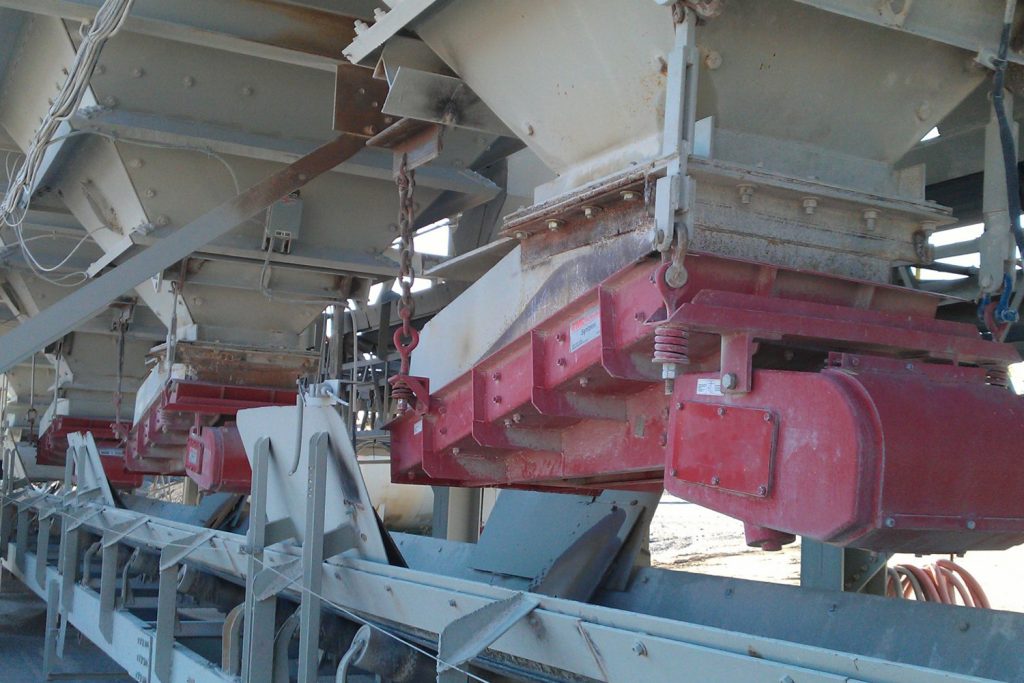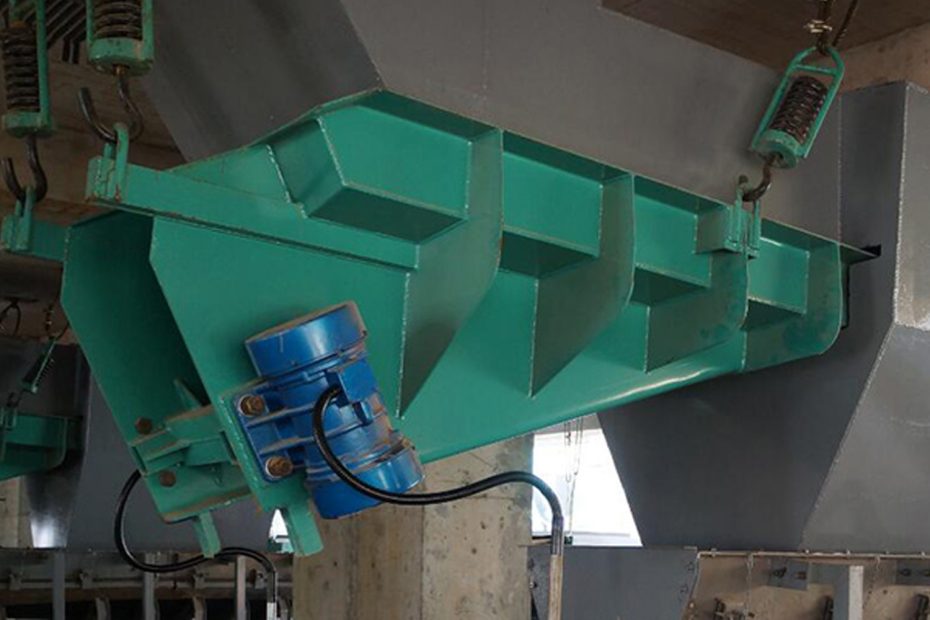The electromagnetic vibrating feeder is a vibration conveying system that mainly uses an electromagnetic exciter to drive the material trough to vibrate. The material moves through the controlled linear vibration, resulting in jumping and throwing motion of the material. The continuous reciprocating vibration of the trough makes the material move. Materials can be fed into the assembly process evenly and continuously.
Construction of Electromagnetic Vibrating Feeder
The structure of the electromagnetic vibrating feeder consists of four components: the feeding trough, electromagnetic exciter, damping device, and controller.
Feeding Trough
The feeding trough is welded from pressed steel plates. Its function is to bear the materials coming from the storage bin and convey the materials to the next feeding equipment through electromagnetic vibration.
Electromagnetic Exciter
The electromagnetic exciter generates electromagnetic excitation force, causing the trough to undergo forced vibration. The electromagnetic exciter mainly consists of exciter housing, iron core, armature, excitation coil, connecting fork, and main vibration spring.
- Exciter Housing: Used to fix the plate spring and iron core, also serving as a balancing mass.
- Iron Core and Armature: Form the magnetic circuit; the coil is fixed on the iron core. When current flows through, an alternating magnetic field is generated, leaving an air gap between the iron core and the armature during installation.
- Coil: Generates excitation current and is fixed on the iron core.
- Connecting Fork: Connects and fixes the housing and armature together to transmit excitation force.
- Main Vibration Spring: Stores energy and connects the front and rear masses, forming a dual-mass vibration system. The main vibration spring can be in the form of plate spring, coil spring, or rubber spring. Depending on the form of the main vibration spring, there may be some differences in the construction of the exciter.

Damping Device
The damping device mainly consists of isolation springs (coil springs or rubber springs) and spring seats, forming an isolation system with the machine body. Its function is to reduce the dynamic load transmitted to the foundation or framework. Depending on different installation methods and isolation requirements, the damping device also has various forms.
The core structure of the electromagnetic vibrating feeder is the feeding trough and electromagnetic exciter. Compared with vibration feeders driven by motors, electromagnetic-driven vibration feeders have fewer moving parts and utilize magnetic force pulses provided by electromagnets to induce trough vibration.
Principle of Operation of Electromagnetic Vibrating Feeder
The electromagnetic vibrating feeder is a relatively complete elastic system of forced vibration with two mass points, operating in a low critical resonance state, consuming minimal electrical energy. The current flowing into the electromagnetic vibrating feeder undergoes half-wave rectification through a thyristor. During the positive half cycle of the power supply voltage, when the thyristor conducts, current flows through the coil, creating a pulsating electromagnetic attraction between the iron core and the armature, causing the trough to move backward. The main vibration spring of the exciter deforms, storing a certain amount of potential energy. When the positive half cycle ends, the current and electromagnetic excitation force approach their maximum values. According to the principle of electromagnetic induction, self-induced electromotive force does not immediately cease the current but continues for some time. During this period, the current and electromagnetic force gradually decrease until they disappear completely. When the electromagnetic excitation force approaches its maximum value, the two masses approach each other. When the electromagnetic force is at its minimum, the trough moves away from the electromagnetic coil under the force of the spring. Thus, the electromagnetic vibrating feeder moves back and forth at the power supply frequency of 3000 times per minute, causing the material to move along the trough.
Conclusion
In conclusion, the electromagnetic vibrating feeder, consisting of a feeding trough and electromagnetic exciter, operates efficiently and with minimal energy consumption. The precise control and reliable performance of this vibrating conveyor system make it a critical component in a variety of industrial processes.
